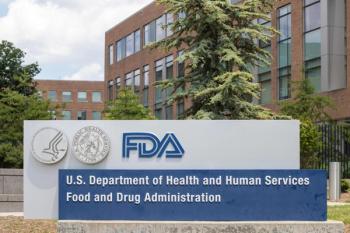
Tom Kraus on Top Advocacy Priorities for Pharmacists: 340B Protections, Payment Reform, and Grassroots Action
From protecting the 340B Drug Pricing Program to expanding payment pathways through state-level reforms and Medicare Advantage opportunities, Kraus emphasized the critical role pharmacists play in evolving care models.
In a recent discussion on pharmacist advocacy, Tom Kraus, MHS, Vice President of Government Relations at ASHP, outlined the most pressing priorities shaping the future of the profession. From protecting the 340B Drug Pricing Program to expanding payment pathways through state-level reforms and Medicare Advantage opportunities, Kraus emphasized the critical role pharmacists play in evolving care models. He also offered practical advice for busy pharmacists and pharmacy students to get involved in advocacy—highlighting the power of grassroots engagement, health system influence, and collaboration with physician organizations to drive meaningful policy change.
Q: In your view, what are the top advocacy priorities for pharmacists today, and how can the profession most effectively advance them?
Tom Kraus, MHS: So, if you're a health system pharmacist, clearly protecting our support for services that are subsidized by the 340B program—that's very important. I think that is at risk for some of the reasons around shifting to a rebate model. It's at risk of reimbursement cuts to covered entities, so that's clearly something we need to continue to defend.
But I think as far as opportunities, these opportunities around payment for pharmacist services that we're seeing in the states play out—that's super exciting. My kind of thinking is, let's pour fuel on that fire. There's so much momentum there that let's just keep that going. If you're in a neighboring state, you can say, "Look, these two states near me expanded pharmacist reimbursement for these services—why aren't we doing that same thing here?" Let's educate our policymakers about that shift that's taking place nationally. I think that's really exciting.
And I think there are also other opportunities for payment that go beyond the fight for Medicare provider status. We're going to keep pushing for that until we get it. But there are other ways that you could see meaningful change in pharmacist recognition beyond that. For example, there's a mechanism called “incident to” payment. This allows a physician to bill for services provided by a member of their care team as if that physician had provided the service themselves. So it gets paid at the Physician Fee Schedule level.
Now, the challenge is that if a physician attempts to do that for a pharmacist—let's say a pharmacist is providing some medication management services to a patient—the physician is only allowed to bill for that pharmacist service at the lowest evaluation and management code. That’s about a $20 payment. But the reality is, most of those pharmacist interventions are probably more like at the 99214 level—the sort of much more complex level—because they’re managing medication, right? That requires a decision around: is this the appropriate therapy for this patient? Do I need to change this therapy? That’s quite a bit of medical judgment that’s being implemented there.
What we need is to work with physician organizations to say, "These are patient relationships that the physician already has that we are supporting." Let’s make a change. Let’s go together to CMS—as opposed to fighting about provider status—and say, “Hey, we don’t need to change anything in the legislation to fix this. Just make it clear that this physician is allowed to submit a bill ‘incident to’ for the full range of services that I'm providing on the care team.” That’s a change that doesn’t require provider status. Like I said, it’s not a substitute—we should still push for provider status—but this would be a really meaningful fix that we could get.
The other thing that I think is such an opportunity is when we started pushing for provider status, traditional Medicare was 80% of the Medicare market, and Medicare Advantage was 20%. Now, Medicare Advantage is more than 50% of the Medicare market. I don’t think people realize broadly that Medicare Advantage plans can reimburse pharmacists as patient care providers. There is absolutely nothing to prevent that—no statutory change needed.
The reality is, if we could get the contracting teams at our health systems and the compliance folks to understand and incorporate pharmacists in those contracts with MA plans, pharmacists could be billing as clinical care providers for more than half of the Medicare beneficiaries today. So, we need to shift that and help folks understand that is an opportunity and work with our compliance and billing teams to take advantage of those opportunities that are already there.
Q: What are some practical ways that busy pharmacists can get involved in advocacy?
Kraus: Yeah, so this is—I understand the challenge. I mean, I want folks to feel like they are—number one, I just want you to feel engaged and passionate and excited about some of the momentum that we're seeing.
So, just the first step: have conversations with your friends and colleagues. That’s the easiest level. As always, folks can—you know, you'll regularly see communications from ASHP inviting you to submit a letter to Congress through our system. That's a relatively easy thing to do.
I think, though, one of the most impactful things that ASHP members can do, particularly if they work in a health system, is to communicate and advocate to your own leadership team. Keep in mind that if you're at a health system, you are probably sitting in one of the biggest employers in your community. It’s probably one of the biggest economic generators in your community. It’s incredibly politically powerful, right?
It may not seem to you like you have that influence, but you're actually part of probably one of the most influential organizations in your community. So, if you can convince your leadership team, your government relations team, that—hey, actually—we should be pushing for reimbursement of these services from our Medicaid program or from commercial payers, you actually have an enormous amount of influence. Having those conversations upward in your organization to make sure that the organization's priorities include pharmacists—that is just so impactful.
The last thing I would say is students can get involved too. I love it when we see students. Some of the most direct engagement with policymakers I’ve seen has come from students when they get fired up about an issue. One of the easiest ways I’ve seen students get involved is if there's some issue in your state—work with your state affiliate. Maybe there’s a provider status or a scope issue, or a residency issue.
It doesn’t take a lot—just come up with two or three bullet points that you want to communicate. Reach out to ASHP. I’ll help you find the contact information for your local policymakers. Then just get in a lecture hall, reserve it for 30 minutes, get 20 students together, and make phone calls. You can make 100 phone calls in 30 minutes, right?
And when you do that, it can be so impactful, because then when I pick up the phone and talk to a member of Congress or another policymaker, they literally—I've had this happen—they will say, “Oh, is this the issue that all the student pharmacists keep calling about? I’m going to support it.” They might not know the details, but they see that there’s passion and that their constituents care. They want to be engaged.
So even if you don’t know all the details of the issue—and you shouldn’t, right? I’m the lobbyist. That’s my job. All the members need to do is communicate: “We care about this, and policymaker, I want you to care about this too.” That’s the level of engagement that I think really has an impact.
Newsletter
Stay informed on drug updates, treatment guidelines, and pharmacy practice trends—subscribe to Pharmacy Times for weekly clinical insights.


















































































































































































































